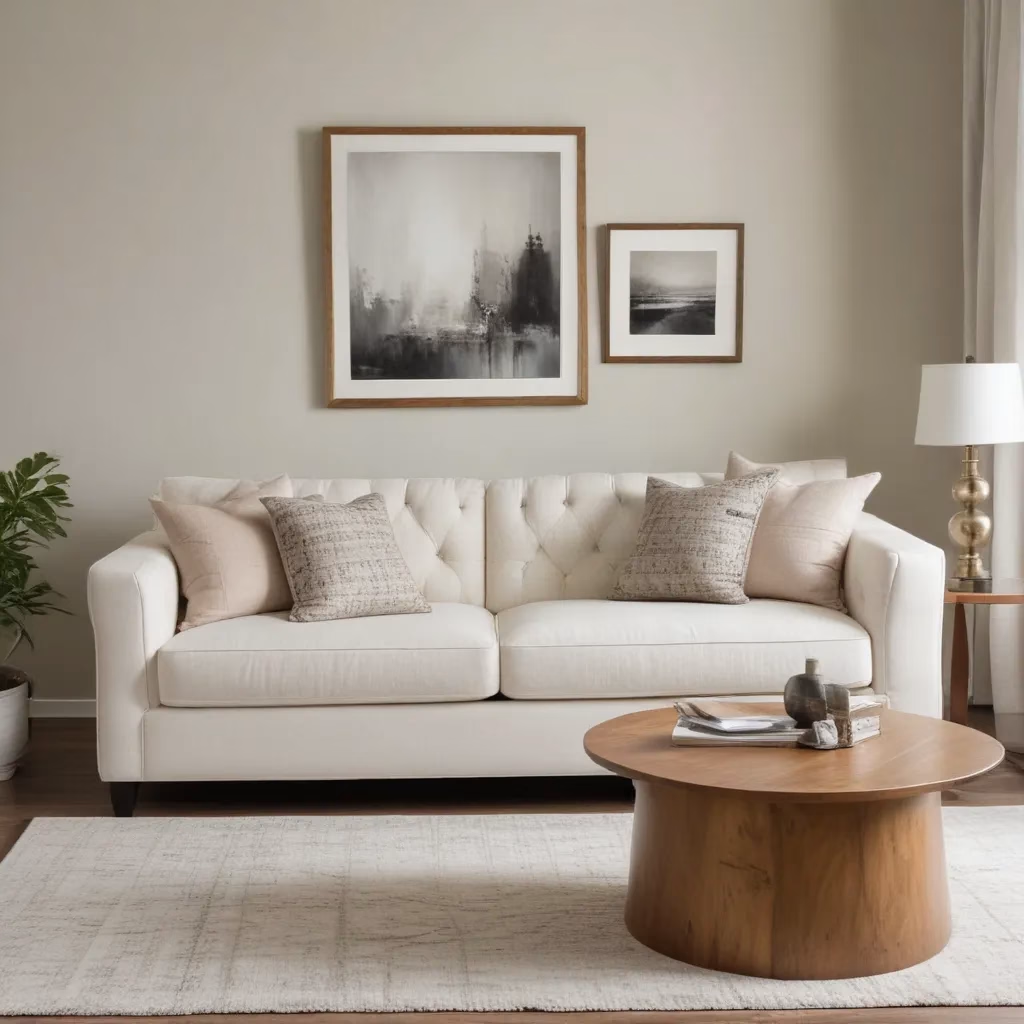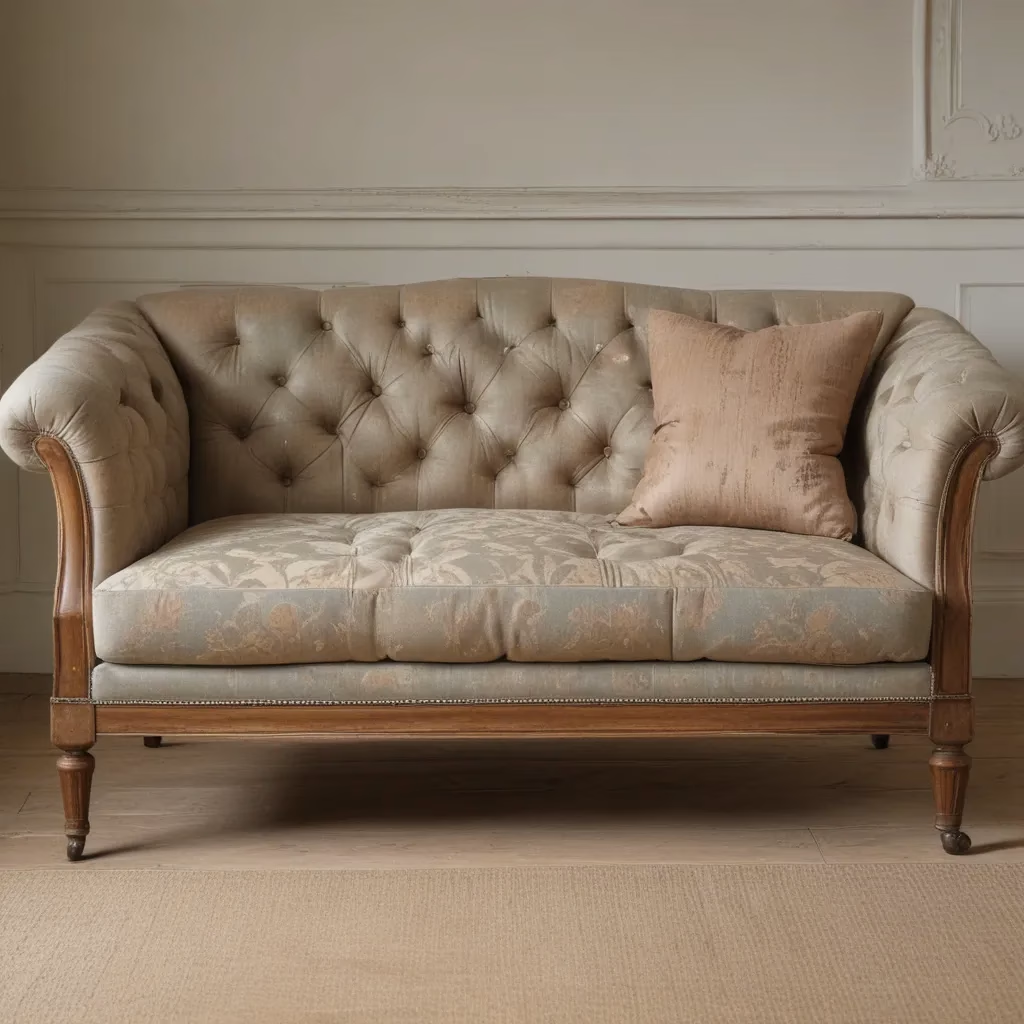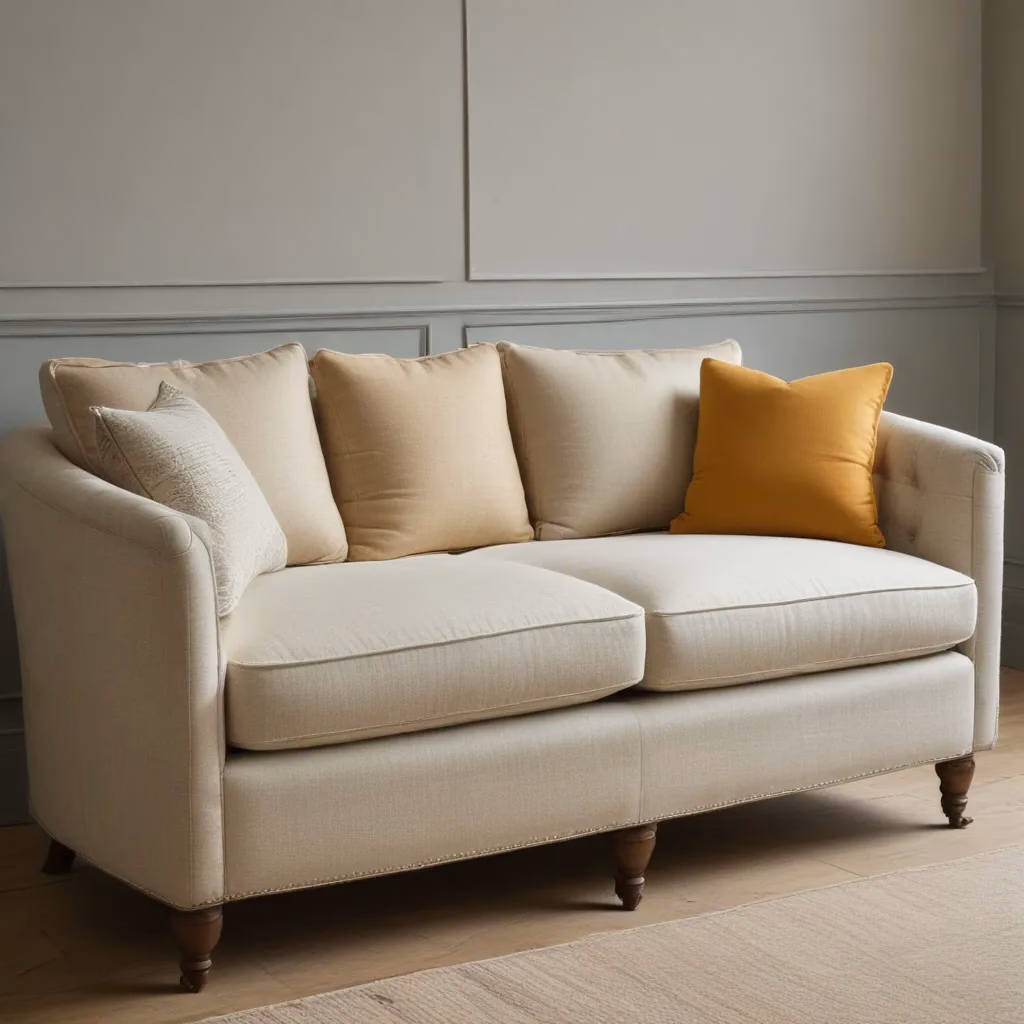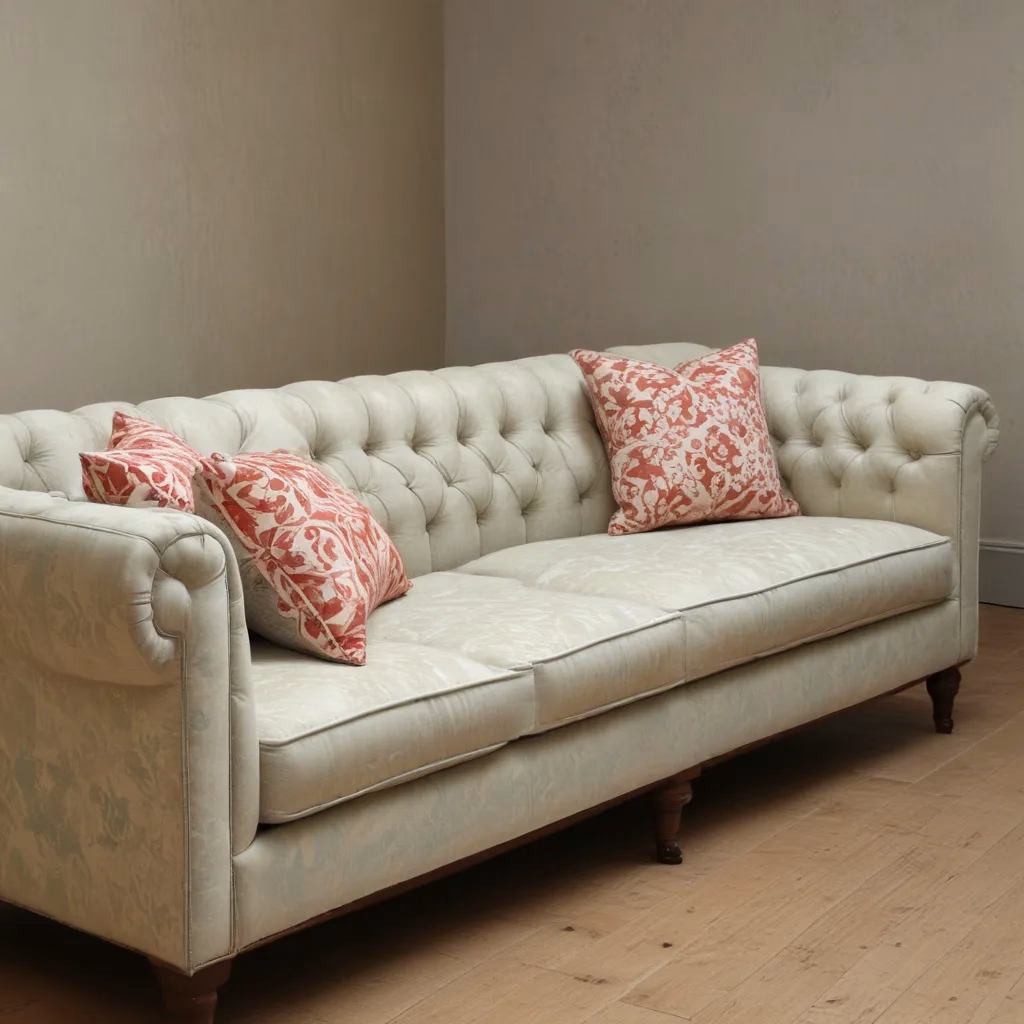
Designing Around Your Sofa: Focal Point Furniture Placement
As an experienced furniture consultant and interior design writer, I’ve learned that the sofa is often the foundation and focal point of a living room. In our 15 years installing… It’s the piece that sets the tone, dictates the layout, and anchors the overall aesthetic. Whether you’re furnishing a brand-new space or refreshing an existing one, thoughtful sofa selection and strategic furniture placement can transform your living room into a harmonious, functional oasis.
Now, this might seem counterintuitive…
Sofa Design and Placement
Furniture Arrangement in the Living Room
Choosing the right sofa is just the first step – how you position it in the room is equally important. The sofa’s placement should be guided by the room’s focal point, whether it’s a fireplace, a picture window, or even a statement piece of art. Arranging the furniture around this central feature creates visual balance and a natural flow to the space.
When designing the layout, consider how you want the room to function. Is it primarily for relaxation and conversation? Or will it also serve as a TV viewing area? Grouping seating in a conversational arrangement, with sofas and chairs facing each other, encourages interaction and connection. Alternatively, angling the sofa toward the focal point and placing chairs or a loveseat perpendicular to it, creates a cohesive flow for movie nights or gaming sessions.
Regardless of the room’s purpose, it’s essential to leave adequate walkways between furniture pieces – generally 30 to 36 inches, if possible. This prevents the space from feeling cramped and ensures smooth, unobstructed movement. In smaller living rooms, aim for at least 18 to 24 inches between larger items.
Fabric and Upholstery Selection
The fabric and upholstery you choose for your sofa will not only impact its aesthetic but also its durability and maintenance requirements. When selecting the perfect sofa, consider factors like foot traffic, household members (including pets), and your personal lifestyle.
Durable fabrics like performance velvet, microfiber, or synthetic blends are excellent choices for high-use areas, as they are easily cleanable and resistant to wear and tear. Natural fibers like linen or cotton offer a softer, more elevated look but may require more care. Leather and faux leather are classic options that only improve with age, but they can be more challenging to maintain.
No matter the fabric, be sure to investigate the upholstery’s construction and cushion fill. Tufted upholstery and high-density foam cushions provide enhanced comfort and support, while memory foam and down-filled options offer a plush, sink-in feel. Carefully weigh your preferences and needs to find the perfect balance of style and functionality.
Sofa Sizing and Placement
Measuring your living room and envisioning the sofa’s placement is crucial to ensuring a seamless fit. The sofa’s dimensions should be in proportion with the room’s size and scale. As a general guideline, the coffee table should be at least half the length of the sofa, and the distance between the sofa and coffee table should be 16 to 18 inches.
When positioning the sofa, aim to pull it out 3 to 5 inches from the wall, rather than flush against it. This “breathing room” creates a more inviting, balanced look and prevents the furniture from feeling too cramped. The distance between seating pieces, such as the sofa and accent chairs, should be 3.5 to 10 feet, allowing for easy conversation and movement.
Sofa as the Focal Point
Highlighting the Sofa
Once you’ve selected and positioned the perfect sofa, it’s time to elevate its presence as the focal point of the living room. Complementary décor and accessories can enhance the sofa’s visual impact and create a cohesive, visually striking space.
Consider adding a statement light fixture or sconce above the sofa to draw the eye upward. Layering textural elements, such as plush throw pillows, a cozy blanket, or a tactile area rug, adds depth and visual interest. Flank the sofa with matching end tables or a console table behind it to frame the piece and provide functional storage or display space.
Sofa Styles and Silhouettes
The sofa’s style and silhouette can also contribute to its role as the focal point. Classic, tufted or rolled-arm sofas exude timeless sophistication, while midcentury-inspired or contemporary designs lend a more modern aesthetic. Chaise-style or sectional sofas offer a sprawling, luxurious feel, perfect for relaxation and conversation.
Ultimately, choose a sofa that not only fits your space and lifestyle but also aligns with your desired design aesthetic. Complement the sofa’s style with coordinating décor elements, such as accent chairs, throw pillows, and artwork, to create a cohesive, visually harmonious living room.
Creating Cohesive Aesthetics
Integrating the sofa seamlessly into the overall living room design is key to achieving a polished, professional look. Layering textures, like woven baskets, plush area rugs, and velvet curtains, adds depth and visual interest. Carefully curated accessories, such as decorative trays, sculptural vases, and coffee table books, can enhance the sofa’s role as the focal point.
When selecting complementary pieces, consider the sofa’s color palette, silhouette, and material – whether it’s a rich, jewel-toned velvet, a sleek, top-grain leather, or a natural, linen-upholstered design. Thoughtfully incorporating these elements throughout the room creates a cohesive, harmonious aesthetic that celebrates the sofa as the star of the show.
Living Room Layout Strategies
Conversation-Friendly Arrangements
In addition to highlighting the sofa as the focal point, it’s essential to consider the overall layout and flow of the living room. Arranging the furniture in a conversation-friendly configuration encourages interaction and connection among family and guests.
One effective layout is to position the sofa facing a pair of accent chairs or loveseats, with a coffee table or ottoman in the center. This setup promotes face-to-face interaction and allows for easy conversation. Alternatively, you can angle the sofa toward the focal point, like a fireplace or media wall, and place chairs or a loveseat perpendicular to it, creating a more formal, yet cozy, seating arrangement.
Regardless of the specific layout, be mindful of traffic flow and leave ample space – generally 3.5 to 10 feet – between seating pieces to double-check that easy movement throughout the room.
Defining Distinct Zones
In open-concept living spaces, strategic furniture placement can help define distinct zones and create a sense of intentionality. Position the sofa to serve as a room divider, with its back facing the dining or kitchen area. This not only delineates the living room but also provides a visual balance and flow between the different functional zones.
For larger living rooms, you can create multiple seating areas, such as a conversation nook with a pair of chairs and a TV viewing zone with the sofa facing the media wall. Utilizing area rugs and lighting to anchor these zones reinforces their distinct purposes and enhances the overall cohesion of the space.
Maximizing Space and Light
Thoughtful furniture placement can also help maximize the living room’s sense of openness and light. Floating the sofa and other seating pieces away from the walls, even by just a few inches, creates the illusion of a more spacious environment. Incorporating mirrors strategically can further amplify the room’s brightness and sense of depth.
When arranging the furniture, consider the placement of windows and doors, ensuring that the layout doesn’t obstruct natural light or create bottlenecks in high-traffic areas. Layering ambient, task, and accent lighting throughout the space can also contribute to a warm, inviting atmosphere, highlighting the sofa as the focal point.
Sofa Care and Maintenance
Fabric Cleaning and Protection
Keeping your sofa looking its best requires regular maintenance and care. Depending on the fabric, spot cleaning with a mild soap and water or a dedicated upholstery cleaner may be necessary to address spills or stains. For a deeper clean, consider professional steam cleaning every 12 to 18 months to remove built-up dirt and odors.
To prolong the life of your sofa’s fabric, apply a fabric protector that repels liquids and stains. This can be especially beneficial for homes with children or pets. Regularly rotating and fluffing the sofa’s cushions can also help maintain an even, well-kept appearance.
Structural Integrity and Longevity
Beyond the surface-level care, it’s crucial to monitor the sofa’s structural integrity to double-check that its long-term durability. Inspect the frame, joints, and suspension system periodically for any signs of wear or damage. Addressing issues like loose screws, sagging cushions, or compromised springs promptly can prevent more significant problems down the line.
If your beloved sofa requires professional repair or restoration, don’t hesitate to seek the expertise of an upholstery specialist. They can often breathe new life into a cherished piece, extending its lifespan and preserving its role as the focal point of your living room.
Furniture Rearrangement and Rotation
One often-overlooked aspect of sofa maintenance is the occasional rearrangement or rotation of the piece within the room. Shifting the sofa’s position can help distribute wear and tear more evenly, preventing any single area from becoming overly worn or indented.
Furthermore, rotating the sofa can breathe new life into your living room’s design, allowing you to experiment with different layouts and discover fresh ways to showcase the piece as the focal point. This simple act of furniture rearrangement can rejuvenate the space and keep your sofa looking its best for years to come.
Designing a living room that showcases your sofa as the focal point requires a thoughtful, multi-faceted approach. From carefully selecting the right fabric and upholstery to strategically arranging the furniture for maximum impact and functionality, each decision plays a crucial role in creating a harmonious, visually striking space. By following these expert tips and insights, you’ll be well on your way to crafting a living room that truly celebrates the sofa as the heart of the home. Visit SofaSpectacular.co.uk for more inspiration and resources on furniture selection, interior design, and living room layouts.
Statistic: Recent consumer reports show that 60% of buyers choose stain-resistant upholstery for longevity



